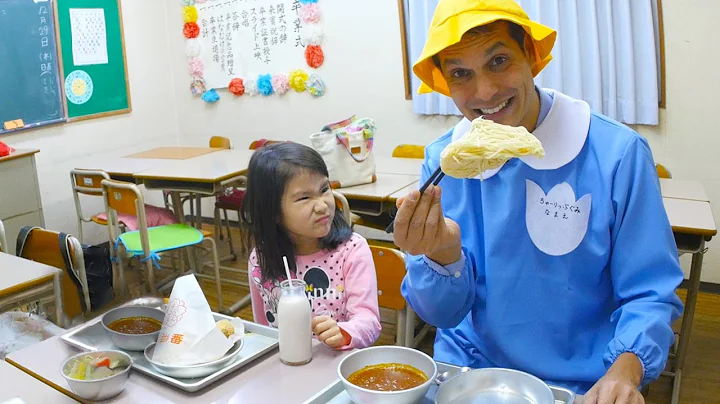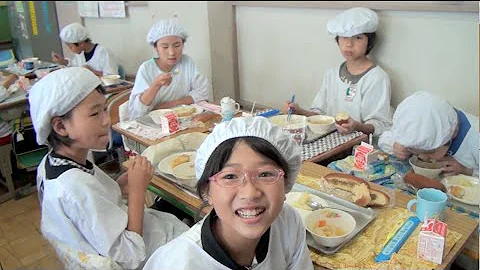Do Japanese high school students eat three meals in the school cafeteria?
The cafeteria in Japanese high schools generally only provides lunch, and students eat breakfast and dinner in the dormitory.
Can I use a meal card to eat in the school cafeteria?
It’s not used, it’s different from our Chinese canteen.

Are the requirements for Kyoto Ryyo High School high?
is not particularly demanding, but it is not low either. This school is located in Kyoto, and I heard that it has expanded its enrollment of international students in the past two years. Students should be careful not to choose a Japanese high school with too many Chinese students when choosing a Japanese high school. This will be a great obstacle to adapting to local life and improving Japanese.
Are the dormitories of Kyoto Ryyo High School on campus?
is on campus and has a dedicated dormitory for international students.
The dormitory is on campus. How often can I leave the campus?
Even if you live on campus, Japanese high schools are not completely closed. Students are free to go out after school and before going to bed. Remember to say hello to the dormitory teacher.
Do international students pay by themselves when they go to the cafeteria?
Lunch is paid by the students themselves. Lunch in Japanese high schools is not expensive, much cheaper than outside school.

Are the conditions of Japanese high school dormitories good?
Our student dormitories at Sino-Japanese Network are in good condition, with single rooms and private bathrooms. However, the original family conditions of each child are different. Some may live in a villa and feel that our room is small. But each of our rooms is certainly large enough for children to play, and they are all equipped with air conditioning and WiFi.
Can Japan University’s undergo plastic surgery?
This is your freedom, yes.
Is it difficult to take the exam at the University of Tokyo?
The University of Tokyo is equivalent to our Tsinghua and Peking University in China. The world ranking of Tokyo University is even higher than that of Tsinghua and Peking University, so this university must not be easy to get into.
Japanese high schools that you can apply for in China this year - Tottori Keai High School
Tottori Keai High School was founded in 1900 and has been for 122 years. It is a famous Japanese high school with a century-old heritage.
Tottori Keai High School adheres to the founding philosophy and spirit of "improving personality and cultivating moral character", with the primary goal of admission to public and private difficult universities. It is a Japanese high school with a high admission rate and high cost performance.

[School deviation value] 58
[City] Tottori Prefecture Tottori City
Tottori Keai High School has two major curriculum directions: general subjects and life education subjects .
Students in general subjects have the main goal of entering university .
The Life Education Department inherits the tradition of women’s education and cultivates women’s professional skills.
(Although Tottori Keai High School is not a girls' school, it attaches great importance to female education.)

General subjects
There are four classes in the general subjects: special admission class, special admission class, advancement class and comprehensive class.
Among them, the special and preferred classes are selected from other classes based on students’ academic goals and grades to form small-class teaching. The four classes will be reorganized according to the actual learning situation of the students.

Lifestyle Education Department
Lifestyle Education Department is divided into food classes and childcare classes.
In addition to basic high school courses, students must also learn basic knowledge of food, clothing, housing and transportation in life and related scientific skills. It focuses on early childhood education and food safety, and aims to enter a home economics university.

After school, there will be teachers from the school to help students with tutoring. No matter what the problem is, the teacher will patiently answer one by one. Even if they are not teachers, they will help the students~~

Starting from the second year of high school, all students will be given tutoring every other week It is necessary to study the traditional Japanese skills-tea ceremony and ikebana. It is not just about learning introductory knowledge, but also serious study of schools. You can reach the level of half-expert when you graduate!

The school has a total of 24 clubs and volunteer activity departments. The club activities have also achieved excellent results in regional activities.

Why is it said that Tottori Keai High School is a Japanese high school with a high admission rate and high cost performance? Because the tuition fee + accommodation fee for the first year is only about 100,000 RMB, and for the next two years, it is only about 60,000 RMB per year. The student dormitories are off campus, so the school requires students to have independent living abilities and be able to cook on their own.
The differences between public universities and private universities in Japan
1. Different establishment entities
Japan’s Education Law stipulates that the state, local public entities and school legal persons can all establish schools. Schools set up by the state are called national schools, and schools set up by local governments are called local public schools, such as Yokohama City University. Schools set up by school legal persons are called private schools. Regardless of national, public or private schools, they must be approved by the national education department and must accept the supervision of the national education department.
2. Tuition fee
The biggest feature of national public universities is that tuition fees are cheap, while tuition fees at private universities are more expensive. Therefore, for Chinese students, the biggest attraction of national public universities is cheap tuition fees. In addition, compared with private universities, it is easier to get free tuition and get scholarships.
3. Requirements
Many things have advantages and disadvantages. On the premise that tuition is cheap, competition is fierce compared to public universities in the country, so the admission requirements will be higher. Of course, different institutions have different requirements. If you want to go to the institution, just go to it. We need to analyze it in detail.

4. Academic
The curriculum of public universities in China is mainly focused on academic research. Taking business management as an example, private universities may do more to cooperate with enterprises, allowing students to do internships, or allowing entrepreneurs to come to schools to provide students with give lecture. However, national public universities tend to focus on theoretical research, and they tend to study some topics in the field of business management.
5. Employment
Many students will also consider future employment when choosing a university. Many students who graduate from first-class private universities such as Waseda University can directly enter some large companies to work, and the income is also good. National public universities are mainly focused on academic research, so more students will choose to continue their studies after graduation, such as taking the master's degree or doctorate, and take an academic research-oriented development path in the future. Of course, if students can pass the seven top national imperial universities If you go to college, you will become a sought-after talent in major companies after graduation.
Comprehensive consideration
Nowadays, some international students with better family backgrounds choose more first-class or second-class private universities. First, private universities are easier to get into than national public universities, and their families can afford the tuition; Second, private universities are also relatively strong in terms of employment; third, except for seven or eight of the better national public universities, which are located in Tokyo, the rest are scattered in various prefectures in Japan. There are fewer jobs, and the hourly wages are also relatively low, so international students may not be able to adapt.
So our suggestion is that if you like science, engage in academic research, and your English is not bad, you can choose a good national public university; if your English is not very good, students who are more focused on future employment and their family conditions are acceptable, then You can choose a better private university.Remember: what suits you is the best. Please give it a lot of thought when making your choice!





















